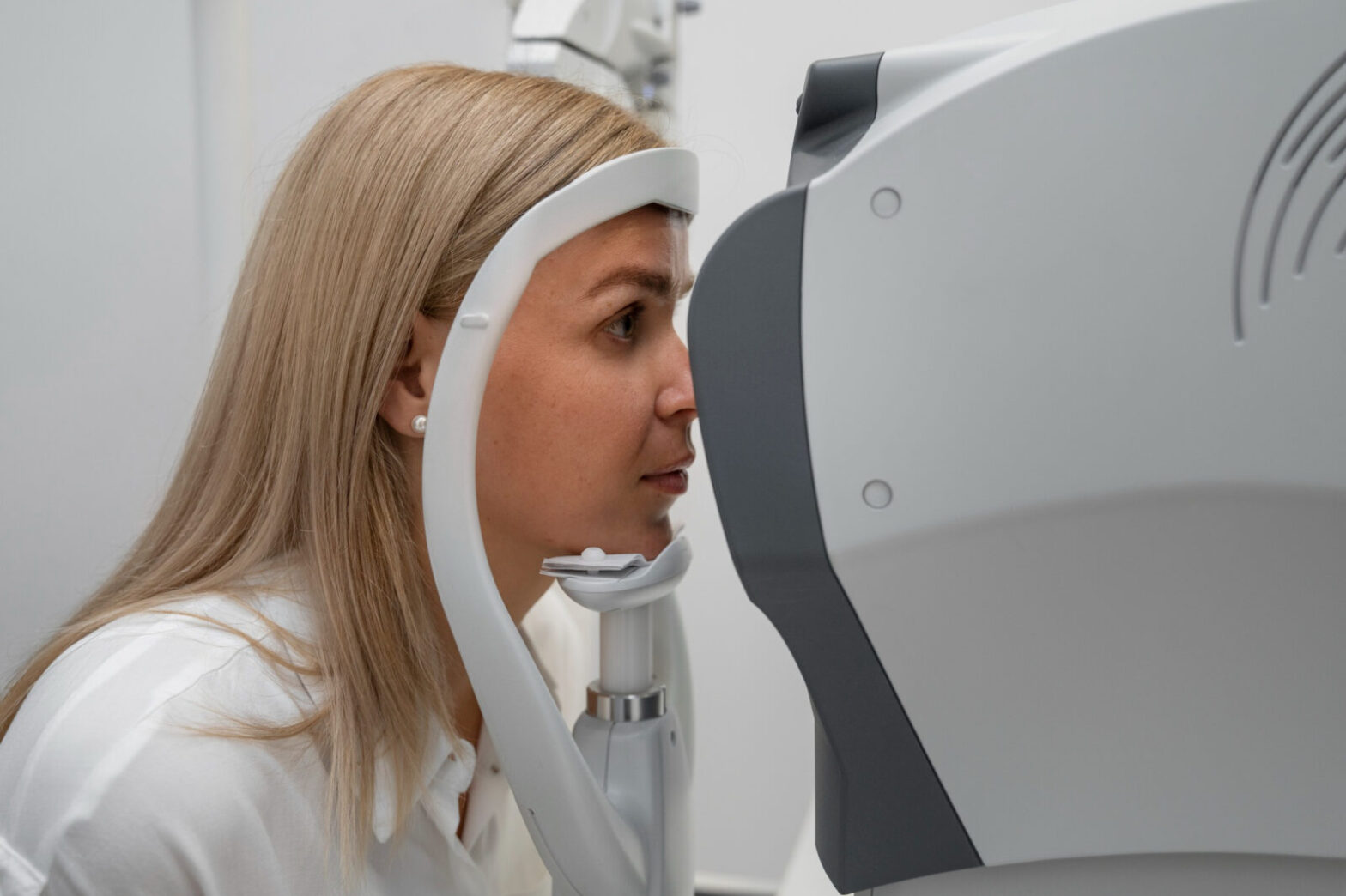Lasik surgery is a widely popular procedure that has transformed the lives of countless individuals by providing them with clear and sharp vision. If you are considering undergoing Lasik surgery, it is crucial to understand the ins and outs of the procedure, the benefits it offers, as well as the potential risks and complications involved. In this article, we will provide you with an in-depth explanation of Lasik surgery, guiding you through the entire process and helping you make an informed decision about whether it is the right path for you to achieve 20/20 vision.
Understanding the Basics of Lasik Surgery
What is Lasik Surgery?
Lasik surgery, short for Laser-Assisted in Situ Keratomileusis, is a specialized surgical procedure aimed at correcting refractive errors commonly associated with myopia (nearsightedness), hyperopia (farsightedness), and astigmatism. With the help of an excimer laser, the surgeon reshapes the cornea to improve its focusing power, thus eliminating the need for corrective lenses.

The Science Behind Lasik
The success of Lasik surgery lies in its ability to reshape the cornea, allowing light to properly focus on the retina. By creating a thin flap on the cornea’s surface, the surgeon gains access to the underlying tissue. The excimer laser then selectively removes a microscopic amount of tissue, reshaping the cornea to match the desired curvature. This precise alteration corrects the refractive errors, resulting in clear and accurate vision.
It is crucial for individuals considering Lasik surgery to undergo a comprehensive eye examination to determine their candidacy for the procedure. Factors such as corneal thickness, pupil size, and overall eye health play a significant role in the success of the surgery. Additionally, patients with certain medical conditions, such as autoimmune disorders or unstable vision, may not be suitable candidates for Lasik.
Potential Risks and Complications
While Lasik surgery has a high success rate and a quick recovery time, it is essential for patients to be aware of potential risks and complications. Some individuals may experience dry eyes following the procedure, which can usually be managed with eye drops. In rare cases, patients may also encounter issues such as undercorrections, overcorrections, or visual disturbances like halos or glare, particularly at night.
The Lasik Procedure: A Step-by-Step Guide
Pre-Surgery Preparations
Before undergoing the Lasik procedure, you will have a comprehensive eye examination to assess your ocular health and determine if you are a suitable candidate for surgery. This evaluation includes measurements of your corneal thickness, refractive errors, and pupil size. Additionally, your medical history, current medications, and lifestyle choices will be taken into consideration.
Once it is confirmed that you are an appropriate candidate for Lasik surgery, the surgeon will provide you with detailed instructions to follow in the days leading up to the procedure. These guidelines may include abstaining from wearing contact lenses for a specified period, ensuring your eyes are free from infections or inflammation, and arranging for someone to take you home after the surgery.
During the Surgery
On the day of the surgery, you will be comfortably positioned on a reclining chair. Your eye will be numbed using eye drops, and a device called a lid speculum will be applied to keep your eyelids open. While you may experience slight pressure or discomfort, the procedure itself is generally painless.
The surgeon will utilize a femtosecond laser or a microkeratome blade to create a corneal flap. After gently folding back the flap, the excimer laser will be employed to reshape the cornea according to the predetermined measurements. This part of the procedure typically lasts for a few minutes, during which you will be asked to focus on a fixed light source.
Once the desired corneal reshaping is achieved, the surgeon will reposition the corneal flap, allowing it to adhere naturally without the need for stitches. An antibiotic eye drop will be applied, and a protective shield may be placed over the eye to prevent any inadvertent rubbing or injury.
Post-Surgery Care and Recovery
Following the Lasik surgery, it is essential to strictly adhere to the post-operative instructions provided by your surgeon. Although you may experience some mild discomfort, such as itching, burning, or watering of the eyes, these symptoms are temporary and typically resolve within a few days.
The majority of patients notice an immediate improvement in their vision, but it is crucial to remember that the full effects may take several weeks to stabilize. During this period, it is advised to refrain from participating in activities that may strain or potentially harm the eyes, such as contact sports or swimming.
Regular follow-up appointments with your surgeon will be scheduled to monitor your healing progress and address any concerns you might have. You will also be prescribed a series of eye drops to aid in the healing process and prevent infection. By adhering to the post-operative care regimen, you can ensure a smooth and successful recovery.
It is worth noting that Lasik surgery has evolved significantly over the years, with advancements in technology and techniques. Surgeons now have access to cutting-edge tools and equipment that allow for greater precision and customization during the procedure. This means that the chances of achieving optimal visual outcomes have significantly improved.
Furthermore, Lasik surgery is not limited to correcting nearsightedness, farsightedness, and astigmatism. It can also address other visual conditions, such as presbyopia, which is the age-related loss of close-up vision. This versatility makes Lasik a viable option for a wider range of individuals seeking to improve their overall visual acuity.
When considering Lasik surgery, it is crucial to consult with a qualified and experienced ophthalmologist who specializes in refractive surgery. They will assess your unique visual needs and provide personalized recommendations based on your individual circumstances. By choosing a skilled surgeon and following the pre-operative and post-operative instructions diligently, you can increase the likelihood of achieving the best possible outcome from your Lasik procedure. Read more about Post-Surgery Care at https://ukhealthcare.uky.edu/orthopaedic-surgery-sports-medicine/resources/post-operative-general-instructions
Benefits of Lasik Surgery
Immediate Improvement in Vision
One of the most significant benefits of Lasik surgery is the swift improvement in vision that many patients experience. For those who have worn glasses or contact lenses for years, the ability to wake up and see the world clearly without any aid is truly life-changing. The removal of refractive errors allows for a high level of visual acuity and freedom from the constant dependence on corrective eyewear.
Moreover, the immediate improvement in vision after Lasik surgery extends beyond just clarity. Patients often report enhanced depth perception and color vision, providing a more vibrant and immersive visual experience. This heightened sense of sight can lead to increased confidence in daily activities and a greater appreciation for the beauty of the surrounding environment.
Long-Term Effects on Eye Health
In addition to providing clear vision, Lasik surgery can have positive long-term effects on eye health. By reshaping the cornea, the procedure reduces or eliminates the need for contact lenses, which can potentially cause dryness, irritation, and even infections. Furthermore, the corrected corneal curvature can improve the overall quality of vision and reduce the occurrence of visual disturbances, such as halos or glare.
Furthermore, the long-term benefits of Lasik surgery on eye health extend to a reduced risk of developing certain eye conditions, such as cataracts and glaucoma. The structural changes made to the cornea during the procedure can contribute to maintaining ocular health as patients age, potentially lowering the likelihood of requiring invasive treatments in the future. This preventative aspect of Lasik surgery underscores its value not just for immediate visual improvement but also for the preservation of long-term eye wellness.
Potential Risks and Complications
Short-Term Side Effects
Like any surgical procedure, Lasik surgery does carry a small risk of short-term side effects. These can include dry eyes, temporary discomfort, light sensitivity, and fluctuations in vision. However, it is important to note that the majority of these side effects are temporary and resolve within a few days or weeks as the eyes heal.
It is common for patients to experience some dryness in their eyes following Lasik surgery. This is due to the temporary disruption of tear film production during the healing process. To alleviate this discomfort, your surgeon may recommend the use of lubricating eye drops to keep your eyes moist and comfortable. Additionally, wearing protective eyewear, such as sunglasses, can help reduce light sensitivity and aid in the healing process.
Long-Term Risks
While rare, there are some potential long-term risks associated with Lasik surgery. These can include under or overcorrection, which may require further enhancement procedures, and the development of halos, glare, or starbursts around lights, particularly at night. It is crucial to discuss these risks thoroughly with your surgeon and address any concerns or questions you may have before proceeding with the surgery. To learn about what you should do before surgery click here.
In some cases, patients may experience regression of their vision years after undergoing Lasik surgery. This can occur due to natural changes in the eye’s structure over time. If this happens, your surgeon may recommend additional treatments, such as glasses or contact lenses, to help you achieve clear vision once again. It is important to attend regular follow-up appointments with your eye care provider to monitor your vision and address any changes that may occur.

Deciding if Lasik is Right for You
Evaluating Your Eye Health
Prior to making a decision about Lasik surgery, it is paramount to have a thorough evaluation of your eye health. Your surgeon will assess factors such as the stability of your refractive error, the thickness and health of your cornea, and the presence of any ocular conditions that may affect the outcome of the procedure. Based on these evaluations, your surgeon will determine if you are a suitable candidate for Lasik.
Furthermore, it is essential to discuss any past eye injuries or surgeries with your surgeon, as these may impact the success of the Lasik procedure. Additionally, your medical history, including any autoimmune disorders or medications you are currently taking, will be carefully reviewed to ensure the safety and efficacy of the surgery.
Considering Your Lifestyle and Needs
In addition to your eye health, it is crucial to consider your lifestyle and individual needs when deciding if Lasik is right for you. Factors such as your occupation, hobbies, and sports activities should be taken into account. While Lasik surgery can greatly improve visual acuity, certain professions or activities that involve extreme visual demands may require additional considerations or alternative treatment options.
Moreover, it is important to have realistic expectations about the outcomes of Lasik surgery. While many patients achieve 20/20 vision or better after the procedure, some may still require glasses for specific tasks such as reading or driving at night. Your surgeon will provide detailed information about the potential results based on your individual circumstances.
Lasik surgery has proven to be a groundbreaking advancement in the field of corrective eye surgery, offering individuals a path to achieve 20/20 vision and reduce their dependency on glasses or contact lenses. By thoroughly understanding the basics of Lasik surgery, the step-by-step procedure, the associated benefits and risks, and evaluating your own eye health, medical history, and lifestyle needs, you can make an informed decision about whether Lasik is the right choice to embark on your path to 20/20 vision.
Related : Surgery Lasik: Debunking Common Myths and Misconceptions
